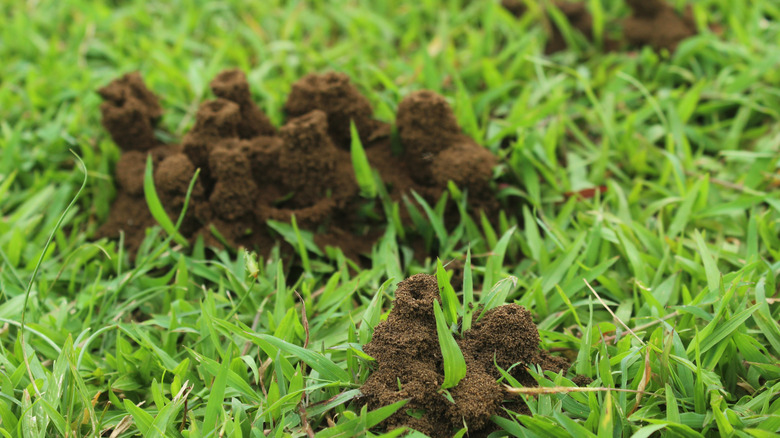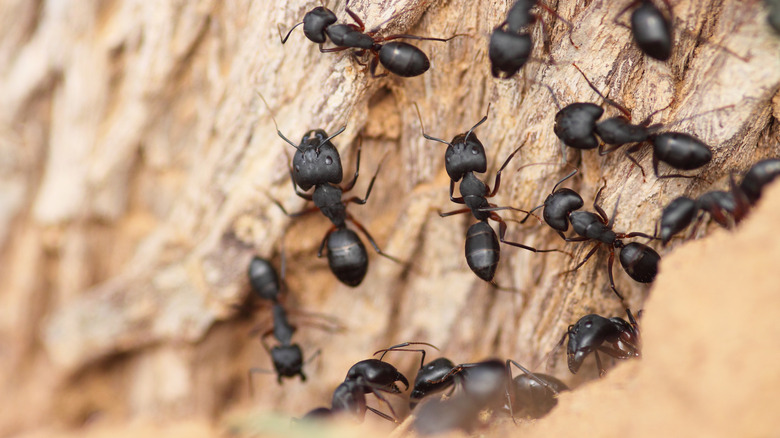Why Are There So Many Ant Hills In Your Yard?
Nobody wants to discover a bunch of anthills in their outdoor space, but what could be the cause of these unsightly lumps? Dr. Allan Cabrero, entomologist and National Science Foundation postdoctoral research fellow at the Smithsonian National Museum of Natural History, spoke exclusively to Outdoor Guide and shared that the number of ant hills in your yard largely depends on where you live and the species of ants in question. "There are too many factors; it could be dependent on species, if they are introduced versus native species, [and] soil type will also impact the number of ant colonies," he explains. Ants can be more than just a nuisance. Some species, like the dangerous harvester ants, can be very potent, and in fact, some researchers suggest that they are one of the most toxic insects on Earth.
Soil plays a critical role as well. Dr. Cabrero notes that ants are most drawn to soil that is "loose, well-draining or sandy," which makes it easier for them to dig through and create expansive tunnels. In addition, changes in weather can also prompt ants to rennovate their hills. "Recent rains can also encourage ant colonies to expand and establish hills," Cabrero says.
Introduced species, like the invasive Argentine ant, can be a problem. "Argentine [ants] can be nuisance pests, fire ants can also be painful and potentially dangerous pests. Invasive and introduced species can also be a problem for native species of ants that are local to where you live, so harboring them on your property can be a problem to the local fauna."
What draws ants to your yard and encourages hill formation?
Ants are incredibly resourceful, and their decision to settle in your yard may be more intentional than you think. Yards with soft, crumbly soil or sand are more likely to host an abundance of ant colonies. Once ants find a suitable environment, they begin digging their tunnels and constructing hills — creating a little network of underground roads that can be surprisingly complex.
Beyond soil, the type of vegetation in your yard can also play a significant role in attracting ants. Some species are more likely to set up shop in areas where they can easily find food. Ants can be attracted to plants or trees that provide them with a constant food source. Some species, like the harvester ant, prefer to forage for seeds and plant material. If your yard has certain types of plants, such as herbs, or flowers, it may be particularly appealing to ants looking for a steady food supply. If they're becoming a real issue, your kitchen may have everything you need to get rid of ant hills with some homemade deterrents you could try, such as a DIY black pepper spray to banish these pesky insects. However, if all else fails, you can always go the chemical route. As Dr. Cabrero explains, "Speciality ant bait insecticides could be used to eliminate pest ants, [and] most hardware and garden stores likely carry the general brands one could use."
The combination of soil conditions, vegetation, and climate can create the perfect storm for ant hills to appear in your yard. The more favorable the environment, the more likely it is that ants will establish themselves and start building colonies. And while they're often just an inconvenience at first, large numbers of ant hills can lead to bigger issues, including damage to your lawn and disruption to the local ecosystem.

